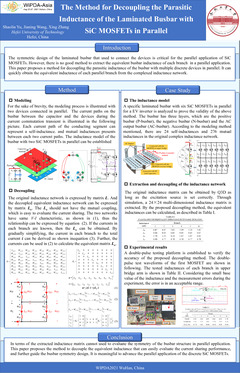The Method for Decoupling the Parasitic Inductance of the Laminated Busbar with SiC MOSFETs in Parallel
ID:38
Submission ID:79 View Protection:PUBLIC
Updated Time:2021-07-21 20:02:14 Hits:1075
Poster Presentation

Start Time:2021-08-27 12:30 (Asia/Shanghai)
Duration:1min
Session:[P] Poster » [P1] Poster 1
Abstract
The discrete SiC MOSFETs are usually paralleled to increase the current capability for high power application. However, the asymmetrical parasitic inductance of the laminated busbar used to connect the parallel SiC MOSFETs may cause the current imbalance. Thus, a symmetrical busbar design is critical for the parallel application of the discrete SiC MOSFETs. While, mutual coupling between the parallel branches, and with the increase in the parallel devices can lead to a very complex inductance network. It is not convenient for the prediction of the current balance and determining the symmetry of the busbar. Based on it, this paper proposes a decoupling method to obtain the equivalent inductance that can easily evaluate the current sharing performance, and further guide the symmetry design of the busbar. A specific laminated busbar with six devices in parallel for EV inverter is analyzed to prove the above method, which is verified by simulation and experimental tests.
Keywords
SiC MOSFETs, laminated busbar, parasitic inductance networks, decoupling, the equivalent inductance
Speaker







Comment submit